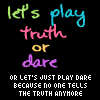Virtual Education refers to instruction in a learning environment where teacher and student are separated by time or space, or both, and the teacher provides course content through course management applications, multimedia resources, the Internet, videoconferencing, etc. Students receive the content and communicate with the teacher via the same technologies
[edit] Characteristics of Virtual Education
Virtual education is a term describing online education using the Internet. This term is primarily used in higher education where so-called Virtual Universities have been established.
Virtual courses – a synonym is online courses – are courses delivered on the Internet. "Virtual" is used here to characterize the fact that the course is not taught in a classroom face-to-face but through some substitute mode that can be associated with classroom teaching.
A virtual program (or a virtual course of studies) is a study program in which all courses or at least a significant portion of the courses are virtual courses.
[edit] Instruction Modes for Virtual Education
Many virtual study programs are mainly text based, using HTML, PowerPoint, or PDF documents. Multimedia technologies have been investigated for many years and eventually found their way into practice. Today a wide spectrum of instruction modes is available, including the following ones:
Hypertext courses: Structured course material is used as in a conventional distance education program. However, all material is provided electronically and can be viewed with a browser. Hyperlinks connect text, multimedia parts and exercises in a meaningful way.
Video-based courses are like face-to-face classroom courses, with a lecturer speaking and Powerpoint slides or online examples used for illustration. Video-streaming technologies is used. Students watch the video by means of freeware or plug-ins (e.g. Windows Media Player, RealPlayer).
Audio-based courses are similar but instead of moving pictures only the sound track of the lecturer is provided. Often the course pages are enhanced with a text transcription of the lecture.
Animated courses: Enriching text-oriented or audio-based course material by animations is generally a good way of making the content and its appearance more interesting. Animations are created using Macromedia Flash or similar technologies.
Web-supported textbook courses are based on specific textbooks. Students read and reflect the chapters by themselves. Review questions, topics for discussion, exercises, case studies, etc. are given chapterwise on a website and discussed with the lecturer. Class meetings may be held to discuss matters in a chatroom, for example.[2]
[edit] Communication and Interaction
Students in virtual education typically acquire knowledge in a uni-directional manner first (e.g. by studying a video, reading a textbook chapter). Subsequent discussions of problems, solving exercises, case studies, review questions, etc. help the students to understand better what they learned before. Electronic media like a discussion forum, chat room, voice mail, e-mail, etc. are often employed for communication.
Homework assignments are normally submitted electronically, e.g. as an attachment to an e-mail. When help is needed, lecturers, tutors, or fellow students, or a help desk are available, just like in a real university. The difference is that all communication goes via electronic media.
[edit] Platforms
Most virtual study programs use an e-learning platform (learning management system – LMS) to administer students and courses and to provide learning content. Examples of such systems are WebCT or Moodle.
Thursday, June 14, 2007
Virtual education
Subscribe to:
Post Comments (Atom)






0 comments:
Post a Comment